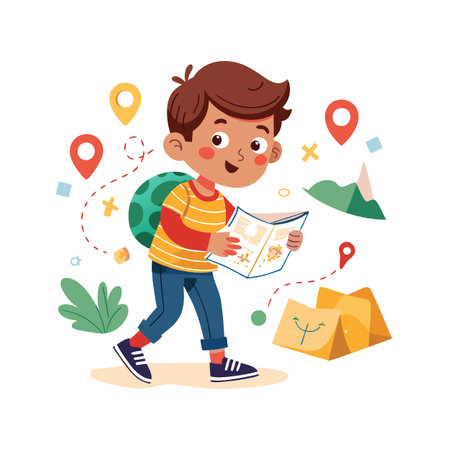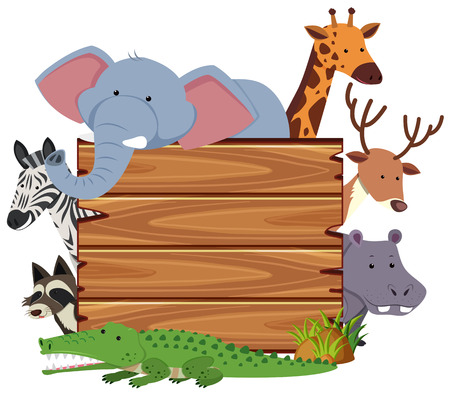Introduction to UK National Parks
Welcome to the wild and wonderful world of the UKs national parks, where natures beauty unfolds in every corner and wildlife thrives across rolling hills, ancient woodlands, and sparkling rivers. Whether you’re a family of seasoned explorers or simply looking for a peaceful escape from city life, these treasured landscapes offer something truly special for everyone. The UK boasts 15 national parks, each with its own unique character—from the dramatic peaks of the Lake District to the gentle moors of the South Downs. These parks are not only stunning to look at but also home to a fascinating array of animals and plants, making them ideal destinations for budding young nature lovers. With well-maintained paths, accessible facilities, and plenty of opportunities for hands-on learning, our national parks are designed with families in mind. So pack your walking boots and sense of adventure—it’s time to discover the wildlife wonders waiting just beyond your doorstep.
2. Top Wildlife Trails for Young Explorers
When it comes to family days out in the UK’s national parks, nothing beats a good nature trail designed with children in mind. Across the country, you’ll find a host of scenic routes that are not only manageable for little legs but also packed with wildlife wonders and hands-on learning opportunities. Below, we’ve highlighted some of the best trails where your young explorers can spot animals, discover fascinating plants, and enjoy the great British outdoors.
| Trail Name | National Park | Length & Difficulty | Wildlife Highlights | Special Features |
|---|---|---|---|---|
| Moorland Discovery Trail | Peak District | 1.5 miles (Easy) | Curlews, skylarks, heather moorland insects | Interactive signposts and bug-hunting spots |
| RSPB Loch Garten Osprey Centre Trail | Cairngorms | 1 mile (Easy/Pushchair friendly) | Ospreys, red squirrels, crested tits | Osprey viewing hides, hands-on nature stations |
| Puffin Trail at Bempton Cliffs | Yorkshire Coast (near North York Moors) | 0.8 miles (Easy) | Puffins (spring/summer), gannets, butterflies | Puffin-spotting telescopes and family quiz sheets |
| Denny Wood Wild Play Trail | New Forest | 2 miles (Moderate) | Ponies, deer, woodland birds | Natural play areas and animal tracking activities |
| Llyn Idwal Family Walk | Snowdonia (Eryri) | 2.5 miles (Moderate) | Peregrine falcons, mountain goats, rare alpine plants | Breathtaking lakeside views and geology info boards |
| The Gruffalo Trail at Wendover Woods | Chilterns (nearby AONB) | 1 mile (Easy) | Squirrels, woodpeckers, butterflies | Themed sculptures and interactive app for families |
A Little Something for Everyone
No matter which trail you choose, each one offers its own unique slice of British wildlife and is tailored for youngsters eager to explore. Many are equipped with interactive features—from scavenger hunts to wildlife-themed play areas—making every visit an adventure. Don’t forget your wellies and binoculars! With so many accessible options across the UK’s cherished national parks, your next wild day out is just around the corner.

3. What to Spot: Native Wildlife and Plants
Exploring the UK’s national parks is a brilliant way for families to connect with nature and discover the country’s iconic wildlife. These trails offer little explorers the chance to spot a whole host of native animals, birds, and plants that make each walk memorable.
Mammals You Might Meet
Keep your eyes peeled for red squirrels darting through woodland in places like the Lake District or Northumberland. If you’re visiting Exmoor or Dartmoor, you might even catch sight of wild ponies grazing on open moorland—a real treat for children! In quieter moments, look out for timid deer peeking out from behind trees or hedgerows.
Birds to Watch For
The UK’s national parks are a haven for birdlife. Along the trails, listen for the melodious call of the skylark in spring or spot bright kingfishers darting along rivers. Children will love seeing puffins (especially in coastal parks like Pembrokeshire) with their colourful beaks, while buzzards and red kites soar overhead in many regions.
Fascinating Flora
No nature trail is complete without marvelling at the plants and flowers that bring colour to the countryside. In spring, bluebells carpet ancient woodlands—perfect for a family photo! Look out for wild garlic, foxgloves, and heather on heathlands. For a magical touch, point out ancient oak trees or delicate ferns unfurling in shaded glens.
Top Tips for Young Nature Spotters
Encourage children to bring along a notebook or camera to record their discoveries. A simple field guide can help identify creatures and plants along the way—turning your adventure into a mini treasure hunt! Remember, some animals are shy, so patience and quiet observation are key.
Protecting Our Wildlife
Remind little ones to respect wildlife by keeping a safe distance and leaving no trace of their visit—just happy memories. By observing these simple rules, families help protect these special habitats for generations of young adventurers to come.
4. Tips for Family-Friendly Exploring
Heading out into the UK’s national parks with children can be a rewarding adventure, but a bit of planning goes a long way in making sure everyone enjoys the day. Here are some practical tips for parents and carers to help make your countryside exploration both safe and memorable.
What to Pack for a Wildlife Adventure
Packing smart is key when exploring nature trails with little ones. Use the table below as a handy checklist to ensure you have all essentials covered.
| Item | Why Its Important |
|---|---|
| Sturdy footwear | Helps protect small feet and provides grip on uneven paths |
| Weather-appropriate clothing | Layers, waterproofs, and sun hats keep everyone comfortable, whatever the weather |
| Snacks & water bottles | Essential for keeping energy up and staying hydrated |
| Small rucksack | Makes it easy for each child to carry their own bits and bobs |
| Mini first aid kit | Useful for dealing with minor scrapes or stings along the way |
| Binoculars & magnifying glass | Adds excitement to spotting birds, insects, and other wildlife wonders |
| Pocket wildlife guidebook | Makes identifying plants and animals fun and educational |
Keeping Young Walkers Engaged
A successful family walk is all about keeping children curious and involved. Try these ideas:
- Wildlife Bingo: Create a simple bingo card of animals, plants, or landmarks you might see. Children can tick them off as they spot each one.
- Storytelling Stops: Take breaks to invent stories about woodland creatures or mythical beasts that might live nearby.
- Pebble Painting: Bring along some paints or markers—collect smooth pebbles on your walk and decorate them during a picnic break.
- Sensory Games: Encourage little ones to listen for birdsong, feel tree bark, or smell wildflowers. Ask questions like “How many different shades of green can you spot?”
Safety First!
No matter which national park you’re visiting, remind children about countryside code basics: stick to paths, respect wildlife by observing from a distance, and always take litter home. A quick review before you set off helps everyone stay safe while making the most of Britain’s beautiful natural spaces.
5. Learning Through Nature
Exploring the UK’s national parks is not only a feast for the eyes, but also a brilliant opportunity for children to learn about wildlife in a hands-on way. Nature trails offer more than just scenic walks—they’re open-air classrooms where young minds can flourish. Here are some simple, family-friendly activities and games that will spark curiosity and make your visit both fun and educational.
Spotter Sheets and Nature Bingo
Before you set out, print or create spotter sheets featuring local birds, insects, flowers, or trees. Challenge your little ones to tick off as many as they can find along the trail. Alternatively, make a game of nature bingo—who will be first to spot a red squirrel or a bluebell? This is a wonderful way to sharpen observation skills while making memories together.
Build a Mini Beast Hotel
Gather fallen twigs, leaves, pine cones, and stones to build a “mini beast hotel” in a quiet corner of the park. Encourage your children to think about what kind of creepy-crawlies might move in. Discuss which materials different insects prefer and why, turning simple play into an engaging science lesson.
Sound Safari
Pause along the trail for a ‘sound safari’. Close your eyes and listen carefully: can you hear birdsong, rustling leaves, babbling brooks or the distant bleat of sheep? Ask each family member to describe what they hear or even mimic it—a playful way to develop listening skills and an appreciation for Britain’s rich natural soundscape.
Leaf Art and Story Stones
Collect interesting leaves or smooth stones (where permitted) and use them for creative projects back at home or in your accommodation. Try leaf rubbing with crayons or paint faces on pebbles to tell your own wildlife stories—these crafts help reinforce what children have seen and learnt during their day outdoors.
Encouraging Curiosity Together
By weaving these simple activities into your adventure, you’ll nurture your children’s love for nature while enjoying quality time as a family. Remember, it’s not about ticking off every sight—it’s about sharing wonder at the little things that make Britain’s national parks so special for families of all ages.
6. Responsible Wildlife Watching
Exploring the UK’s national parks is a brilliant way for families to connect with nature, but it’s important that we all play our part in protecting the wonderful wildlife we encounter. By following some simple guidelines and embracing the principles of the Countryside Code, children and adults alike can ensure these beautiful spaces remain safe havens for animals and future explorers.
The Countryside Code: Essential Tips
The Countryside Code is the foundation for responsible outdoor adventures in the UK. It reminds us to respect everyone, protect the environment, and enjoy the outdoors responsibly. Make sure your family sticks to marked paths to avoid trampling delicate habitats, keeps dogs under control—especially around livestock and nesting birds—and takes all litter home. Even biodegradable items like fruit peels can harm wildlife or spoil the natural setting for others.
Wildlife-Friendly Behaviour
When spotting deer in Exmoor or red squirrels in the Lake District, remember to observe quietly from a distance. Loud noises or sudden movements can frighten animals and disrupt their routines. Teach children not to pick wildflowers or disturb nests, as these small actions help preserve the homes and food sources many creatures rely on.
How Families Can Make a Difference
Every little effort counts when it comes to protecting our countryside. Encourage your children to become ‘nature detectives’—noticing signs of wildlife without disturbing them. Consider joining local clean-up days or volunteering for park conservation projects as a family activity. Sharing stories about your positive actions on social media can also inspire friends to follow suit and help spread awareness about caring for our precious wild places.
A Legacy of Respect
By practising responsible wildlife watching and sharing these values with your children, you’re helping to safeguard the UK’s national parks for generations to come. With thoughtful choices and a gentle touch, every family adventure can contribute to a brighter future for our wildlife wonders.


